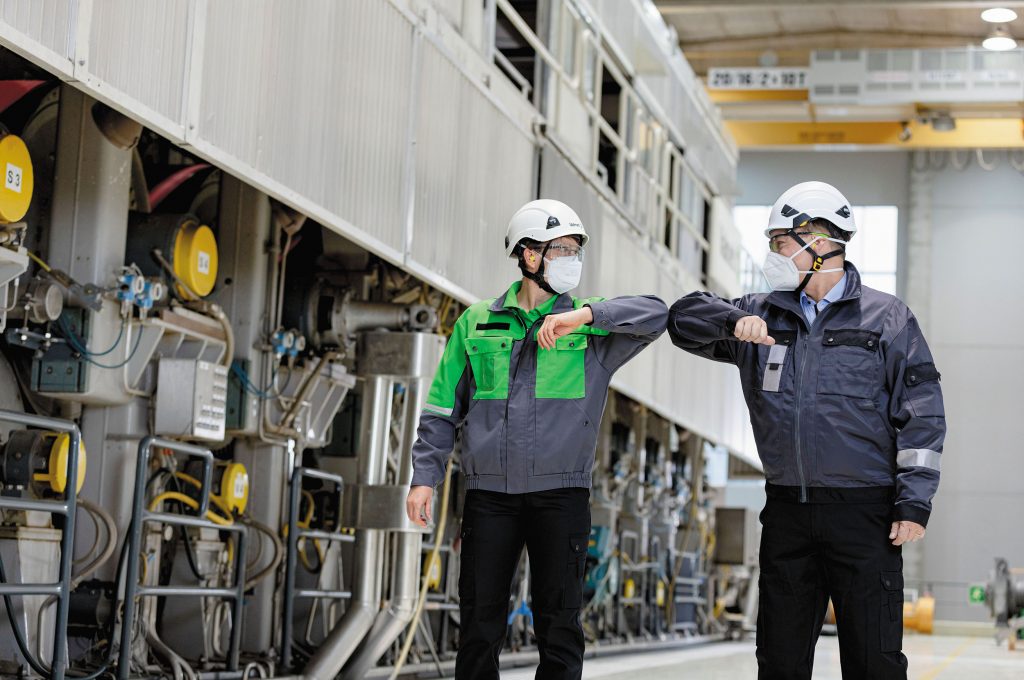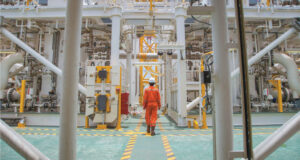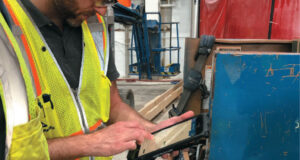COVID-19 issues have taught everyone valuable new lessons about safety. Keeping safety at the center of operations is more important than ever.
That’s certainly been true at her company, says Tammi Duckworth, senior manager, health, safety, and environment North America for Valmet. “All of our safety developments revolve around a single focus: commitment to the safety and well-being of each person and others—suppliers, team members, customers, families, and society at large.”
Duckworth continues, “Peace of mind, resulting in high performance, happens because of a dynamic safety culture. At Valmet every employee contributes to safety innovation. Strong leadership and individual commitment are why our safety record continues to progress toward zero harm. There is never a finish line for safety-productivity advances because we can always do better.”

Matthew Kanneberg, a board member for the Pulp and Paper Safety Association (PPSA), considers Human Organizational Performance (HOP) understanding to be a critical breakthrough in safety. Because human error is inevitable in any pulp and paper mill, putting the HOP approach into action reduces risk and promotes a strategic approach to building system strength.
“A common approach to errors in the past was often punitive,” he says. “It’s obvious people don’t plan to get hurt. The old days of the iron-fisted leader worked against safety; blame accomplished nothing. By contrast, the evolution to include HOP ‘values’ built into everything we do fosters a learning environment, lending to continuous improvement. Understanding this doesn’t negate personal accountability to flagrant violation, but it does differentiate between error and willful actions.”
SAFETY PPE ALREADY AHEAD
The most obvious changes since the coronavirus relate to PPE availability and emergency preparedness. According to Mike Hoffmann, general manager, Valmet’s Waukesha Service Center, “When you work in a foundry, advanced PPE is a way of life, far beyond what’s required in most factory settings. Optimizing productivity close to extreme heat, while also constantly lifting heavy objects, benefits from longstanding safety practices and new ones.
“After studying every task in our facility, we decided to install lifting equipment at many more stations,” he continues. “Many parts we make weigh 30-60 pounds. Lifting and moving these throughout a shift is tiring. Over the past two years, 11 additional lifting devices were installed, ranging from Garble hoists to magnetic lifts to swing cranes. Now, operators have more time for decision making, and less short-term and long-term strain,” notes Hoffman. “We are eliminating fatigue.”
BUILDING SAFETY INTO PRODUCTS AND SYSTEMS
Mike Lehrmann, Valmet global technology manager, refiner segments, says a focus on safety resulted in the development of Pro Safe lightweight segments for refiners. “Valmet’s easy-to-lift segments weigh up to 75 percent less. This assures user-friendly mounting.”
The light segments can help prevent back, shoulder, hand, and knuckle injuries, notes Greg Jones, director, finishing North America, Valmet. “Winders are known to be one of the most dangerous equipment stations in paper mills,” he says. “That’s why our customers call on us to partner with them with training and ever-increasing safety features build into our equipment. Being a batch process with 5 to 10 parent rolls being slit per hour, risks are real. Comprehensive efforts around access are crucial to supporting our customers’ achievement of zero injuries.
“Perimeter control safety measures include retractable barriers to keep personnel at a safe distance during hay-out and empty spool ejection,” Jones continues. “There’s a wide opening TS sliding gate between unwind and slitters, and hinged gate on DS. We have chuck core guards and wind-up access gates. There’s a line of sight (LOS) control to allow most operator functions—for example, to lower the cradle to the floor.”
Even in the workplace, COVID-19 safety issues include social distancing. According to Yan Langlois, Valmet, manager, fiber workshops, North America, “Our task force in Montreal has found a way to monitor social distancing, and still solve problems as a team. Now, everyone wears a device to stay six feet apart. Many wear AR safety glasses to provide their expertise virtually.”
WORKPLACE INJURIES ARE POSSIBLE
EVERY SECOND OF THE DAY
Concludes Duckworth, “The simplest measure of safety, after all, is harm. Replacing harm with everyday safety practices requires every person to stay alert to everyone’s well-being. When vigilance is second nature, even better results happen. When your heartbeat has a safety ring to it, you are on the way.”
Randy Adams, PPSA board member, has a simple philosophy toward safety. “We can be so eager to convey our plans, policies, and SOPs. Yet we often don’t listen to the concerns of those it will directly affect. People do not care how much you know until they know how much you care.”
Learn more about the Pulp and Paper Safety Association at ppsa.org.
 Paper 360
Paper 360

